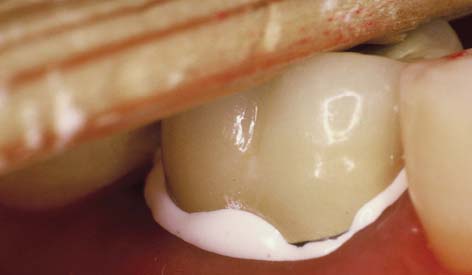If you do not want to read the text, you can listen this presentation on YouTube at this link Overseas Registration Examination
What is the Overseas Registration Examination (ORE)?
ORE means Overseas Registration Examination. It is an exam that overseas qualified dentists have to pass because their dental bachelor degrees are not recognised by GDC. After passing ORE, a dentist can get registration in GDC and he or she will be allowed to practise dentistry unsupervised in the UK. The ORE tests the clinical skills and knowledge of overseas dentists who are referred to as a candidate. Candidates are expected to be at equal or above the standard of a ‘just passed’ UK BDS graduate. A candidate should be able to show competence, knowledge and familiarity in the different aspects of dentistry in the exam.
The ORE has two parts
The Part 1 is designed in such a way that it tests candidates’ application of knowledge to clinical practice. ORE part 1 consists of two computer-based exam papers:
Paper A covers clinically applied dental science and clinically applied human disease. Basically it will check your ability to apply your knowledge of non clinical subjects to understand its role in human diseases.
Paper B covers aspects of clinical dentistry, including law, ethics, health and safety. It means paper B will check your ability to treat patients taking care of existing laws of the UK, ethics, and safety. Each paper lasts three hours and is made up of multiple short answer questions. They will contain extended matching questions and single best answer questions. A candidate is expected to be able to show competence, knowledge and familiarity in the different aspects of dentistry.
You need to achieve a minimum 50% marks in each paper to pass the part 1 of ORE. There are a maximum of 200 places available at each examination period. You must pass both papers in order to progress to Part 2.
Location and Cost of Overseas Registration Examination
The Part 1 exam is held at King’s College London and costs £806. There are currently no confirmed dates for 2021. Your exam results will be sent to you by email. Generally it is declared within 20 working days of the examination. You will be given a percentage mark out of 100 for paper 1 as well as paper 2. Also, you will get an overall pass or fail award. Approximately 40 working days after the examination, the Part 1 Supplier, King’s College London, will provide you with result feedback. Upon passing Part 1, your name will be added to the Part 2 candidate list. You will be allowed four attempts for Part 1.
Part 2 of ORE
Part 2 is designed for candidates to demonstrate practical clinical skills. For each examination period, a maximum of 144 candidates are able to undertake the Part 2 exam. The current cost of the examination is £2,929 per candidate, payable at the time of booking.
Part 2 Examination Dates:
There are currently no confirmed dates for 2021 part 2.
Four Components of Part 2 of the ORE:
- DM,
- OSCE,
- DTP &
- EM
First component is An operative test on a dental manikin: Candidates are required to perform three procedures over a period of three hours. These procedures primarily involve the preparation and restoration of teeth, but may also include other procedures where appropriate simulation can allow assessment of operative skills.
Second component is An objective structured clinical examination (OSCE). This is where candidates visit a series of ‘stations’ which test their clinical skills. These may include history-taking and assessment, communication skills such as an explanation of problems and treatment plans, judgement and decision making, ethics and attitudes, and clinical examination. The series of stations will cover aspects of behavioural sciences, human disease, law, ethics, professionalism, clinical dentistry, restorative dentistry, paediatric dentistry, orthodontics, preventive dentistry, dental public health, comprehensive oral care, oral surgery, oral medicine, oral pathology, oral microbiology, dental radiology and imaging.
Third component is A diagnostic and treatment planning exercise (DTP): This involves an actor who will provide an appropriate history. You will be provided relevant additional information such as photographs, radiographs, study models or results of other special tests. You will not examine the actor. The exercise may involve any of the above aspects of clinical dentistry I just mentioned.
Fourth component is a practical examination in medical emergencies (ME). This assessment consists of two parts: First is a structured scenario-based oral and the second is a demonstration of single handed basic life support. This will include cardiopulmonary resuscitation using a resuscitation manikin. You will be allowed four attempts for Part 2. Your exam results will be sent to you by email. The result will be declared within 20 working days of the exam. If you only fail the medical emergencies exercise during the ORE Part 2 , you will be able to re-sit this component only at a future exam. Sitting the ME only exam costs £300. If you pass the ME component at this sitting, you will have passed Part 2 of the ORE. If you fail, you will need to retake the full ORE Part 2 exam, if you are eligible to do so. The ME only exam is held at the same time as the full Part 2 exam. Once you have passed Part 2, you will be able to apply for registration with the GDC.
Books Recommended for ORE Preparation
- Oxford Handbook of Applied Dental Science
- Oxford Handbook of Clinical Dentistry 6
- Scully’s Medical Problems in Dentistry, 7 e
- Master Dentistry: Volume 1
- Master Dentistry: Volume 2
- Essentials of Dental Radiography and Radiology-Eric Whaites
- Vanders Physiology
- BD Chaurasia for Anatomy

